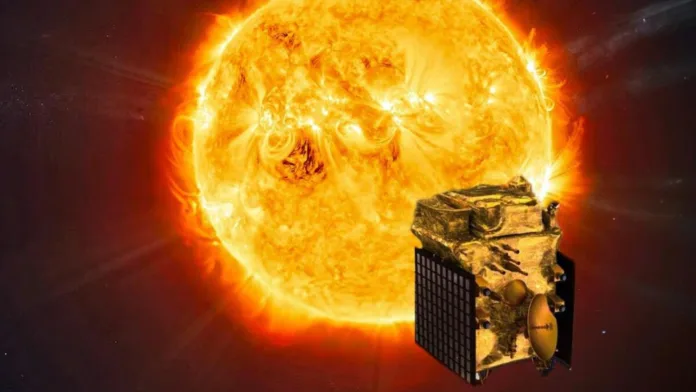Summary
- Aditya-L1 Spacecraft: In order to provide an unhindered view of the Sun, India’s ISRO is preparing to maneuver the Aditya-L1 spacecraft to Lagrange Point 1 (L1), 1.5 million kilometers from Earth with the help of Aditya-L1 Mission.
- Journey to the Sun: After being launched on September 2, 2023, the spaceship travelled 15 lakh kilometres and made exact manoeuvres using specialised propulsion systems to arrive to its objective.
- Unusual Orbit: Aditya-L1 will circle L1 in a halo that will allow for uninterrupted solar observation and real-time tracking of solar activity.
- Cutting-Edge Technology: With seven scientific payloads, the mission’s goal is to solve riddles about the solar system by examining the dynamics of space weather and researching the photosphere, chromosphere, and corona.
- International Cooperation: In order to ensure accurate orbit determination and spacecraft orientation in the face of gravitational perturbations for a revolutionary Sun exploration, ISRO works with ESA to improve its control systems and software.
With its Aditya-L1 mission, the Indian Space Research Organization (ISRO) is very close to reaching a major milestone in space, where the gravitational force between celestial bodies creates unique equilibrium points. The spacecraft is ready to begin a critical phase, an orbital rendezvous with Lagrange Point 1 (L1), where it will unlock unprecedented views of our nearest star, the Sun, after a laborious voyage spanning millions of kilometers.
Table of Contents
Aditya-L1 Mission: A Quest Beyond Earth’s Realm
On September 2, 2023, the Aditya-L1 mission left the Satish Dhawan Space Centre with hopes of investigating the mysterious phenomenon of the Sun. This massive undertaking, led by ISRO, offers a greater comprehension of solar dynamics and their impact on space weather. It is also an expedition into scientific exploration.
Related Topic: Aditya-L1: India’s Sun powered Odyssey Uncovers the Insider facts of the Sun
Handling Space’s Complexities
The journey of the spacecraft can be divided into two complex stages: the transit to L1 and the careful orbital maintenance around this gravitational pivot. Aditya-L1 maneuvered across space, using its thrusters and specialized propulsion systems to perform critical maneuvers like as the Trans-Lagrangian Point 1 Insertion (TL1I) and accurate Trajectory Correction Maneuvers (TCMs).
When the spacecraft reaches L1, it will enter a halo orbit, which is a three-dimensional trajectory intended to provide unhindered views of the Sun. This special location at L1 provides a crucial benefit: an uninterrupted view of the Sun free from occlusions or eclipses, allowing for hitherto unheard-of real-time monitoring of solar activity.
Accuracy and Cooperation in Space Travel
The intricate combination of technology, accuracy, and international cooperation is necessary to maintain orbit at L1. Determining Aditya-L1’s orbit, which is essential to both mission success and safety, is a continual tracking procedure that comprises space-based equipment, ground stations, and thorough analysis.
The spacecraft’s orientation and position are protected from gravitational perturbations by the Attitude and Orbit Control System (AOCS). In close cooperation with the European Space Agency (ESA), ISRO has refined its operational plans and software by learning from the experiences of past missions and utilizing advanced algorithms to guarantee accurate positioning and maneuvering.
Deciphering the Sun’s Mysteries
Aditya-L1’s scientific payload serves as evidence of its curiosity. The spacecraft is equipped with seven specialized equipment designed to monitor and examine different layers of the Sun, ranging from the photosphere to the outer corona. These instruments provide valuable information about coronal mass ejections, coronal heating, and space weather dynamics.
Finally, A New Era for Solar Exploration
The Aditya-L1 mission is a prime example of India’s commitment to expanding the frontiers of space exploration and science. With the hopes of a country and the combined efforts of scientists and engineers, the spacecraft prepares to enter orbit around L1, ready to reveal the mysteries of our solar neighbor. Aditya-L1 is a monument to human creativity and the never-ending search for knowledge beyond our terrestrial domain, situated in the great cosmic theatre where celestial bodies play their cosmic ballet.
Disclaimer:
AI was used to conduct research and help write parts of the article. We primarily use the Gemini model developed by Google AI. While AI-assisted in creating this content, it was reviewed and edited by a human editor to ensure accuracy, clarity, and adherence to Google's webmaster guidelines.


